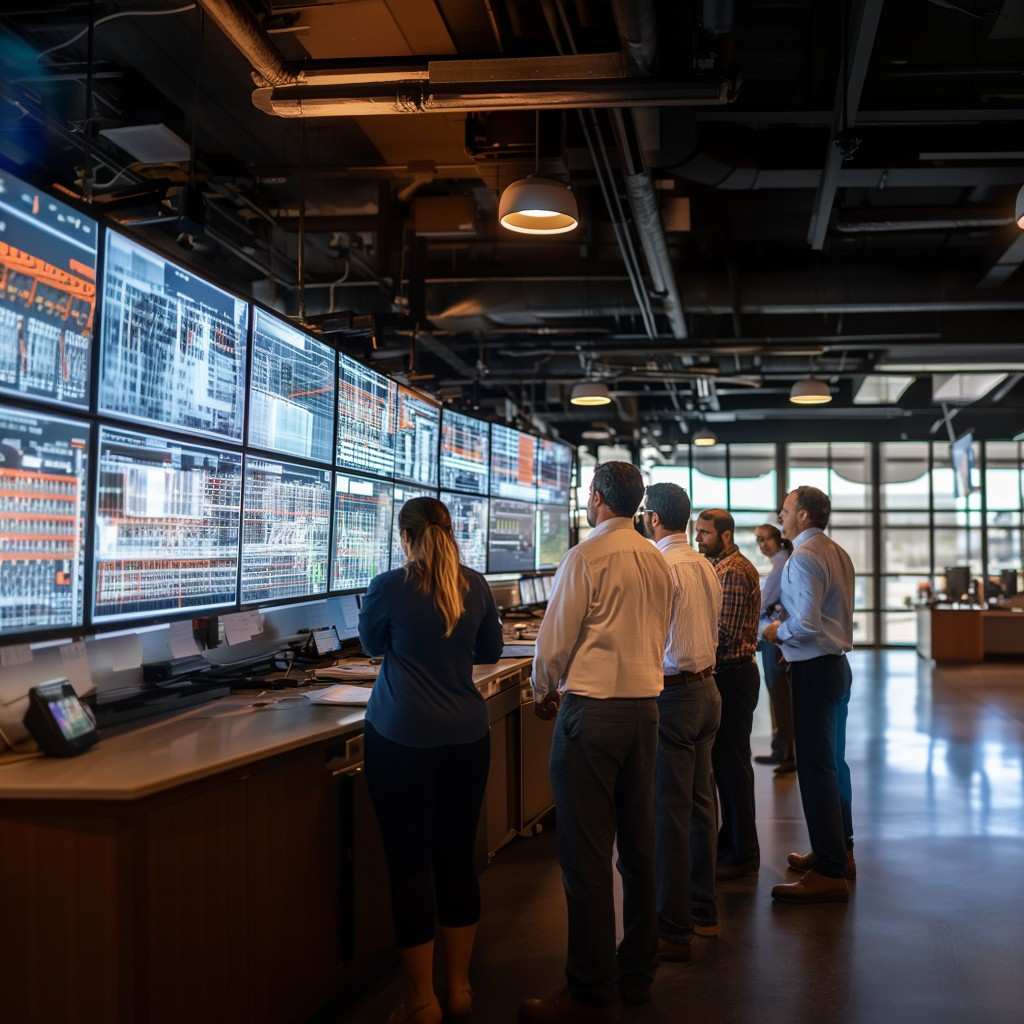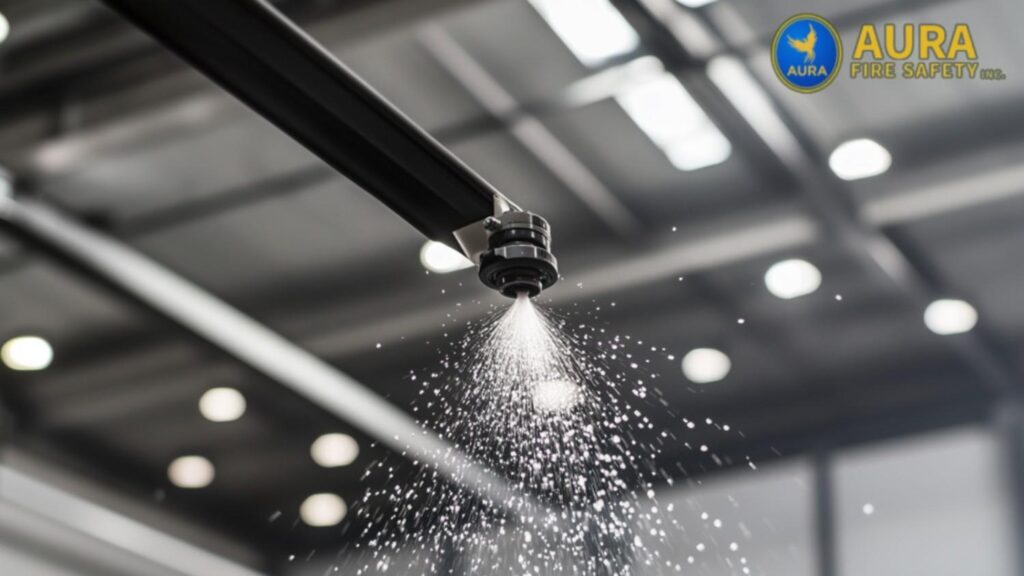Fire sprinkler systems have come a long way since their inception in the early 19th century. Initially used to protect commercial buildings, these systems are now a staple in almost every type of structure, including residential homes. However, when it comes to fire protection, more than a one-size-fits-all approach is required.
The effectiveness of a sprinkler system relies heavily on its ability to adapt to the unique needs of different environments. This article explores the importance of customizing sprinkler systems for specialized industries, highlighting the factors influencing system design and the benefits of tailored fire protection solutions.
Specific Industry Needs for Fire Protection
Industries have diverse fire protection requirements, and understanding these needs is vital to designing effective fire sprinkler systems. Several factors influence the design of tailored fire suppression solutions, including the specific fire hazards present, the level of fire protection required, and the desired response time. Additional considerations include:
- The building’s layout.
- The availability of water supply.
- The potential impact on occupants.
How Do Custom Systems Adapt to Specific Environments and Storage Needs?
Custom-engineered fire suppression systems are designed to meet the unique hazards and operational demands of different environments, moving beyond the limitations of standardized layouts and activation methods.
Key Adaptations:
- Specialized Components for Risk Mitigation: Custom systems integrate unique elements like high-temperature sprinklers, foam suppression, or water mist nozzles based on the environment’s fire risk. For example, chemical plants may require foam agents to suppress fires involving hazardous materials, while cold storage facilities might need dry pipe systems to prevent freezing in low temperatures.
- Tailored Activation Methods for Sensitive Environments: In environments like data centers, where traditional water usage could cause significant damage, systems often use gas or mist suppression to minimize harm while effectively extinguishing fires. These tailored methods ensure protection without compromising the integrity of sensitive assets.
- Storage-Specific Customization: The type of materials stored in a facility plays a critical role in system design. High-flammability environments, such as chemical warehouses, may need high-expansion foam sprinklers. At the same time, data centers and museums require systems like clean agent suppression to avoid water damage to valuable or delicate items. Additionally, facilities with dense storage arrangements, such as racked warehouses, benefit from strategically placed in-rack sprinklers, ensuring fires are quickly contained at the source.
Installation Considerations for Custom Systems for Occupancy Type
The type of occupancy is a critical factor in designing a fire sprinkler system, as it directly influences the system’s responsiveness and effectiveness. Each occupancy type has its own set of challenges, which dictate the system’s design and functionality.
Considerations Based on Occupancy:
- Healthcare Facilities: In hospitals where patients may have limited mobility, fire sprinkler systems must prioritize rapid detection and suppression with minimal water damage to sensitive areas like operating rooms. Systems are often integrated with smoke evacuation and emergency lighting to ensure patient safety and ease of evacuation.
- High-rise buildings require systems capable of addressing fires on multiple levels. Stairwell pressurization, high-rise-specific sprinklers, and zoned suppression systems help manage fire spread vertically and horizontally across floors.
- Educational Institutions: Schools and universities need systems that account for high occupant density and varied building uses, from classrooms to laboratories. Sprinkler placement is designed to cover large, open areas like gymnasiums as well as confined spaces.
Tailoring the fire sprinkler system to the occupancy type ensures a swift response that mitigates fire damage while facilitating safe and orderly evacuation.
Installation Considerations for Custom Systems for Building Structure
Building structure plays a fundamental role in determining the layout and specifications of a fire sprinkler system. The architectural design, materials used, and spatial configuration all impact the system’s effectiveness.
Structural Factors:
- Ceiling Height and Room Layout: Warehouses with high ceilings and expansive open areas require sprinklers that can distribute water across wide spaces. Systems like Early Suppression Fast Response (ESFR) sprinklers are often used to combat fires at higher elevations.
- Historic Buildings: Preservation of the building’s aesthetics and integrity is paramount. Here, concealed or low-profile sprinklers may be employed, along with systems designed to minimize water usage to protect sensitive structural elements.
- Mixed-Use Buildings: For buildings that combine residential, commercial, and public spaces, the fire protection system must be versatile, adapting to the varying fire risks of each section. Zoned systems with specific response mechanisms cater to these complex layouts.
Each structural aspect dictates how the sprinkler system should be customized to provide optimal coverage and performance, ensuring comprehensive protection without compromising the building’s design integrity.
Installation Considerations for Custom Systems for Environmental Conditions
Environmental conditions, such as temperature, humidity, and potential exposure to corrosive elements, necessitate specialized fire sprinkler solutions. Custom systems are designed to maintain functionality and reliability in diverse environmental settings.
Environmental Adaptations:
- Cold Storage and Freezers: In environments prone to freezing temperatures, such as cold storage warehouses, standard wet pipe systems are unsuitable due to the risk of pipe freezing. Instead, dry pipe systems, which keep water out of the pipes until a fire activates the sprinklers, are implemented to prevent freezing.
- Corrosive Environments: Industrial sites that deal with corrosive substances require sprinklers made from corrosion-resistant materials like stainless steel or specialized coatings that prevent system degradation over time.
- High-Humidity Areas: Locations with constant high humidity, such as indoor pools or certain manufacturing environments, might employ moisture-resistant components or pre-action systems that prevent accidental discharge.
By considering environmental conditions, custom fire sprinkler systems are optimized to deliver dependable fire protection regardless of external challenges, maintaining safety standards and operational continuity.
Technological Innovations in Fire Sprinkler Systems
Technological advancements have significantly transformed fire sprinkler systems, enhancing their efficiency, adaptability, and intelligence. Modern fire sprinkler systems are no longer just basic water delivery mechanisms—they are sophisticated, integrated solutions that actively respond to the specific needs of different environments.
Smart Integration with Building Management Systems (BMS)
- Real-Time Monitoring: Modern fire sprinkler systems can integrate seamlessly with building management systems, allowing for real-time monitoring and control. This integration enables facility managers to track system status, detect issues early, and respond promptly to fire incidents.
- Automated Alerts: Systems can send automated alerts to emergency services and building personnel, ensuring immediate action when a fire is detected.
Water Mist Systems
- Fine Droplets: Unlike traditional sprinklers that release large volumes of water, water mist systems use ultra-fine droplets to suppress fires. The smaller droplets increase the surface area, allowing the water to absorb heat more efficiently and displace oxygen more effectively.
- Minimal Water Damage: This technology is ideal for environments where water damage can be as costly as the fire itself, such as data centers, museums, and archives. By using less water, these systems reduce the risk of collateral damage to sensitive equipment and materials.
- Enhanced Cooling and Suppression: Water mist systems cool the fire and surrounding gasses, effectively suppressing the fire and preventing re-ignition.
Enhanced Fire Suppression Agents
- Clean Agent Systems: These systems use gasses like FM-200 or Novec 1230 to suppress fires without leaving residue or harming electronic equipment. Clean agents are particularly useful in environments like server rooms, where water or foam could cause significant damage.
- Foam-Based Sprinklers: In facilities dealing with flammable liquids, foam sprinklers offer a specialized approach. The foam blankets the fire, cutting off the oxygen supply and cooling the fire rapidly. These systems are tailored for environments such as aircraft hangars or chemical processing plants, where traditional water-based systems may need to be more effective.
Advanced Detection Technologies
- Infrared and Ultraviolet Sensors: These sensors detect fire at its earliest stages by identifying changes in heat and light, providing a faster response than traditional smoke detectors.
- Multisensor Detection: Combining smoke, heat, and carbon monoxide detection, multisensor systems offer a more comprehensive approach to fire detection. This technology reduces false alarms and ensures that the sprinkler system activates only when a true fire threat is present.
As technology continues to advance, fire sprinkler systems will become even more intelligent and responsive, further revolutionizing fire protection strategies across industries.
Choosing the Right Provider
Understand your industry’s unique needs, tailor the system design, and choose the right provider to enhance your fire protection strategy significantly. Aura Fire Safety delivers tailored, code-compliant, and highly effective fire protection solutions, making us your ideal partner for all fire safety needs.
As a top fire safety company serving the San Francisco Bay Area, Aura Fire Safety offers over 27 years of experience in providing comprehensive fire protection solutions. Specializing in both residential and commercial properties, We are dedicated to safeguarding lives, properties, and investments against the threat of fire. Contact us today to learn how we can help you safeguard your property and assets with customized fire protection solutions.



 The Ad Firm
The Ad Firm